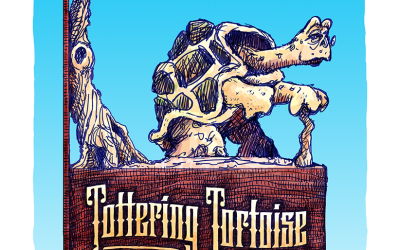We love using Precision Board in our shop to create unique dimensional signs and we go through literally tons of it each year. Precision Board is versatile and easy to work with as it accepts almost any finish and is durable over the long haul. Even so, it is rare...
Sculpturing
Rotary CNC Routing of Precision Board Faux Statues
Coastal Enterprises, manufacturers of Precision Board HDU, is proud to announce a series of guest blogs written by Dan Sawatzky of Imagination Corporation, which will be posted on the Precision Board Blog each month. This month Dan Sawatzky shows us how he used their...
Making 3D Art from Urethane Foam
Kevin Langmaack is an art instructor at Central Valley Christian School. He teaches a 3D foam carving art class to high school students. They learn about creating realistic objects through carving high-density urethane foam. Langmaack talks about the concepts...
Orange Coast College Students Sculpting the Future with Precision Board
The students at Orange Coast College in Costa Mesa, California, are creating sculptures using Precision Board High-Density Urethane. It's all part of Leland Means' sculpture class. He's exposing the kids to materials they may use in the professional world and...
Creating an Architectural Gable with Precision Board HDU
When Shane Durnford created an architectural gable for a home, he used Precision Board HDU and hand-carved the incredible detail into it. For him it was a return to sign work & he couldn’t be happier about it. Shane talks about bringing this work of art to life...
Dan Sawatzky’s Time Piece for ISA 2019
Coastal Enterprises, manufacturers of Precision Board HDU, is proud to announce a series of guest blogs written by Dan Sawatzky of Imagination Corporation, which will be posted on the Precision Board Blog at the end of each month. In this month’s entry, Dan Sawatzky...
Making the Hazelnut Inn Model with Precision Board HDU
Coastal Enterprises, manufacturers of Precision Board HDU, is proud to announce a series of guest blogs written by Dan Sawatzky of Imagination Corporation, which will be posted on the Precision Board Blog at the end of each month. In this month's entry, Dan gives us...
Making Art Out of Precision Board HDU Drops
Mike Smith with Creative Scribing has a boneyard with drops of Precision Board HDU from his day job and uses them to make various projects- like shop signs and artwork. His most recent creation involved some drops that he turned into an Art Deco wall hanging. Mike...
Harley Quinn Heats up San Diego Comic-Con 2017
Thinking about using Precision Board HDU in combination with other types of materials for a project? We talked to James A. Powell, VP of Design at Monster City Studios in Fresno, California, about a recent project his team worked on involving both Precision Board and...
